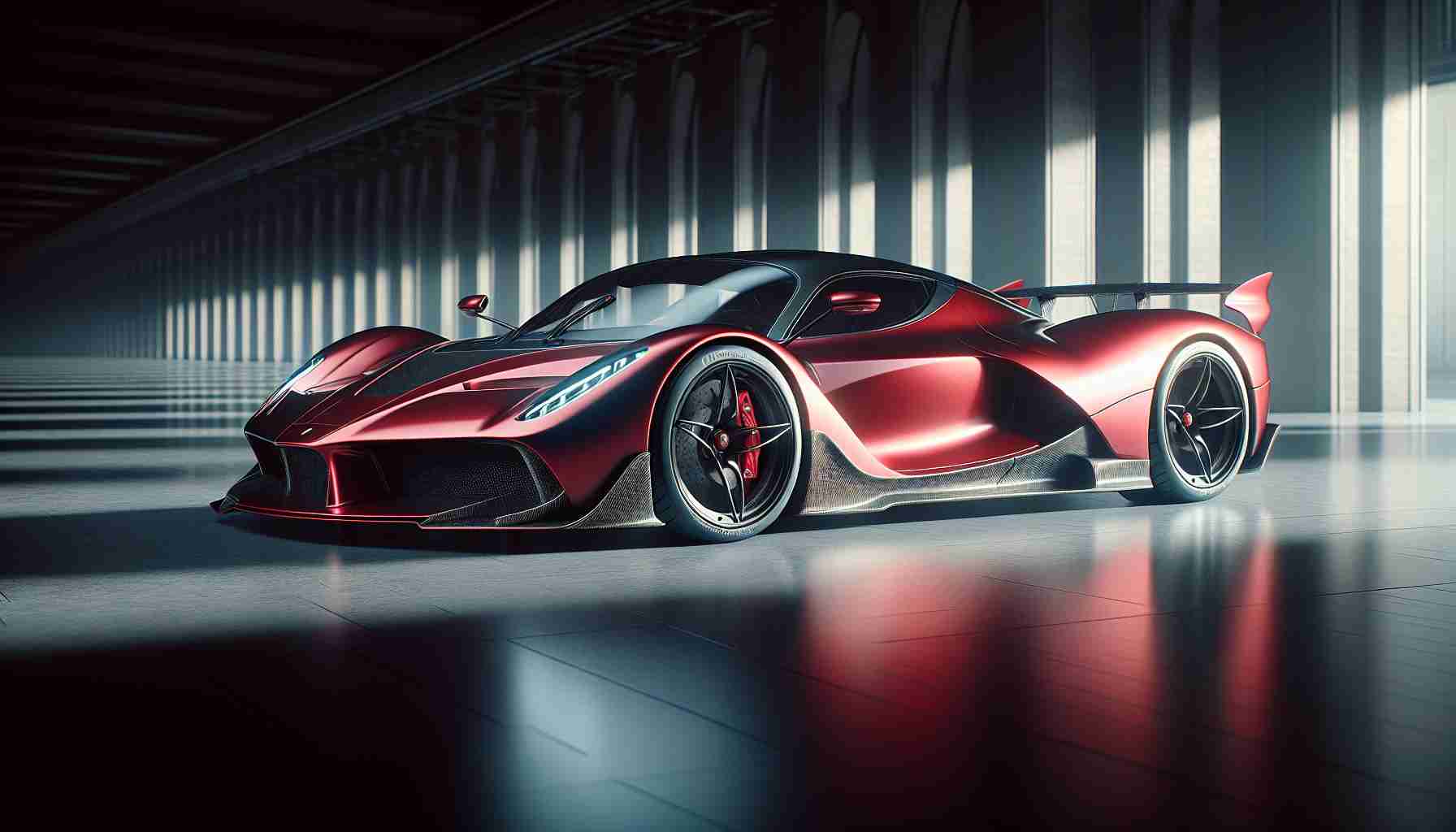Ferrari continues to redefine the boundaries of automotive innovation with its latest hypercar, the F80. This captivating machine represents the pinnacle of four decades of engineering excellence and is poised to join the ranks of legendary models like the 288 GTO and LaFerrari. The recent success of Ferrari in prestigious races, including consecutive wins at the Le Mans 24 Hours, has only heightened anticipation around this remarkable vehicle.
At the heart of the F80 lies a cutting-edge hybrid powertrain boasting a formidable 3.0-liter V6 engine. This engine doesn’t just pay homage to traditional Ferrari power but incorporates advanced hybrid technology, enhancing both efficiency and performance. The F80 reaches breathtaking speeds, accelerating from 0 to 62 mph in merely 2.1 seconds.
Noteworthy features include innovative aerodynamic elements derived from Formula One. The aerodynamics of the F80 are engineered to generate a staggering amount of downforce, ensuring exceptional grip and stability on the road. With a focus on driver engagement, the software and control systems work seamlessly, making the car feel intuitive and responsive.
With an impressive total output of 1,183 bhp, Ferrari has ingeniously crafted a vehicle that encapsulates performance, luxury, and cutting-edge technology. The F80’s electric motors, developed in-house, provide dynamic torque vectoring, further enhancing its driving dynamics. As Ferrari embarks on this new chapter, the F80 not only embodies speed but also reflects the brand’s relentless pursuit of excellence.
The Technological Marvel of Ferrari’s F80 Hypercar
Ferrari, the illustrious Italian automaker, has always been at the forefront of automotive technology, and the F80 hypercar is a testament to this legacy. Integrating groundbreaking advancements with a legacy of racing prowess, the F80 is not merely a car—it’s an assertion of Ferrari’s mastery over high-performance engineering.
What makes the F80 stand out among hypercars?
The F80 is equipped with a hybrid powertrain that combines a turbocharged 3.0-liter V6 engine with two electric motors. This setup not only produces an astounding 1,183 bhp but also enhances torque delivery, optimizing power for various driving conditions. The synergy between the combustion engine and the electric motors is designed for unparalleled performance and efficiency. One of the standout features of this hypercar is its Active Suspension System, which adjusts dynamically to road conditions, further augmenting the vehicle’s handling capabilities.
What are the key challenges that Ferrari faced during the F80’s development?
Developing the F80 involved overcoming significant challenges, particularly in achieving a balance between performance and environmental sustainability. The automotive industry is undergoing a shift towards greener technologies, and Ferrari aimed to maintain its high-performance legacy while adhering to stricter emissions regulations. Additionally, the integration of electric systems and software required extensive testing to ensure they complemented Ferrari’s iconic driving experience rather than detracting from it.
What are the controversies surrounding hybrid hypercars like the F80?
One of the major controversies surrounding hybrid hypercars, including the F80, is the debate over authenticity. Traditionalists argue that integrating hybrid systems compromises the raw driving experience that sports cars are renowned for. Critics often express concern that the advancements in electric technology may lead to a detachment from the mechanical feeling that enthusiasts cherish. However, Ferrari claims that the F80’s hybrid system aims to enhance driver engagement rather than replace it, allowing for a seamless transition between electric and combustion power.
Advantages and Disadvantages of the F80 Hypercar
Advantages:
– Performance: With nearly 1,200 bhp, the F80 offers blistering performance that places it among the fastest road cars globally.
– Technological Innovation: The hybrid system and advanced aerodynamics ensure that the vehicle not only performs exceptionally but also achieves efficient energy use.
– Cutting-Edge Safety Features: The F80’s driving dynamics are fortified by state-of-the-art safety technologies, enhancing driver confidence.
Disadvantages:
– Cost: As with most hypercars, the price point may be prohibitive for many potential buyers, and owning such a vehicle often comes with high maintenance costs.
– Weight Distribution: While hybrid systems enhance performance, the added weight of the battery systems can affect weight distribution, which some purists might find detrimental to the overall driving experience.
– Market Appeal: The shift towards hybrid models may alienate some traditional Ferrari fans who prefer the analog driving experience.
As Ferrari sets the stage for the future with the F80, it prominently illustrates the tension between tradition and innovation within the sports car realm. With every evolution, Ferrari continues to push boundaries, appealing to both new enthusiasts and seasoned collectors alike.
For further exploration of Ferrari’s innovation and engineering excellence, check out the official Ferrari website: Ferrari.









